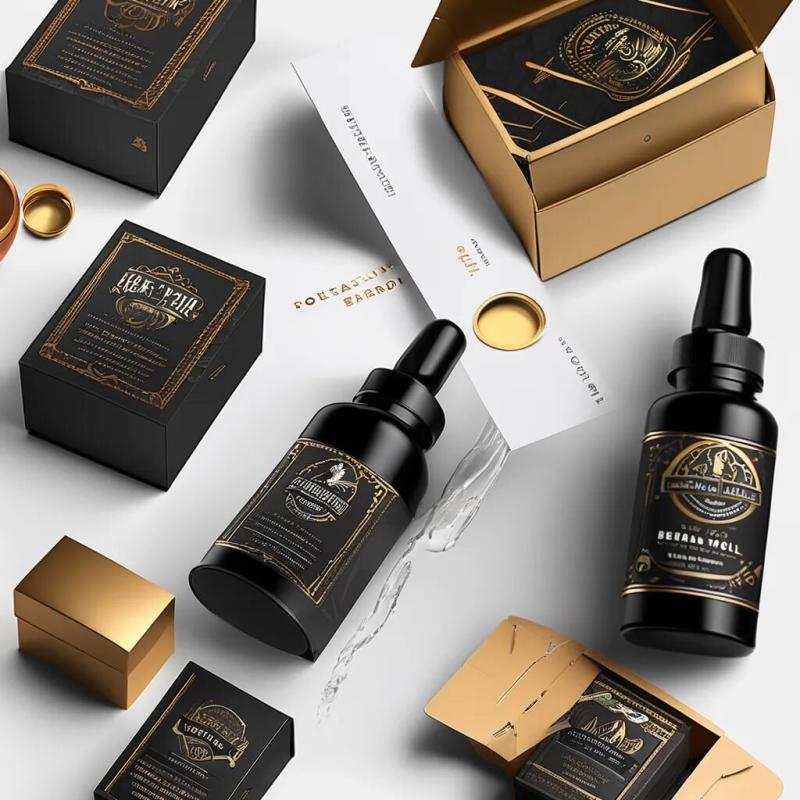How to Make Beard Oil to Sell: A Step-by-Step Guide

Beard oil has become a popular product in the grooming industry, with many men seeking to maintain their beards in good condition. Creating your own beard oil to sell can be a profitable venture if done correctly. This guide provides a straightforward approach to making and selling beard oil.
1. Understand the Market
Before you start making beard oil, it's essential to understand the market. Research the current trends, popular scents, and price points. Identify your target audience, such as men with beards, and what they look for in beard oil. Understanding your market will help you develop a product that meets customer needs and stands out in a competitive field.
2. Gather Ingredients and Equipment
To make beard oil, you'll need a few key ingredients and equipment. The main components of beard oil are carrier oils and essential oils. Carrier oils serve as the base and include options like jojoba oil, argan oil, and sweet almond oil. Essential oils add fragrance and can offer additional benefits. Popular essential oils for beard oil include cedarwood, sandalwood, and lavender.
Equipment needed:
- Glass dropper bottles: To package the beard oil.
- Mixing bowls: For combining the oils.
- Measuring spoons: To measure the oils accurately.
- Pipettes or droppers: For adding essential oils.
3. Formulate Your Recipe
Creating a beard oil recipe involves selecting the right ratio of carrier oils and essential oils. A common ratio is 80% carrier oils and 20% essential oils. For example, you might use 3 tablespoons of jojoba oil and 1 tablespoon of argan oil as your carrier oils. To this mixture, add 10-15 drops of essential oil for fragrance.
Here's a basic recipe to get started:
- Carrier Oils:
- 2 tablespoons jojoba oil
- 2 tablespoons argan oil
- Essential Oils:
- 10 drops cedarwood essential oil
- 5 drops lavender essential oil
Mix the carrier oils in a glass bowl and then add the essential oils. Stir the mixture thoroughly to ensure even distribution of the essential oils.
4. Test Your Product
Before selling your beard oil, it’s crucial to test it. Apply a small amount to your beard to check for any adverse reactions. Make sure the fragrance is pleasant and not overpowering. Testing will help you ensure the quality and effectiveness of your product.
5. Package Your Beard Oil
Proper packaging is essential for both preserving the quality of your beard oil and presenting it attractively to customers. Use glass dropper bottles, as they are ideal for dispensing the oil and maintaining its freshness. Consider custom beard oil packaging boxes to enhance the presentation and protection of your product. Label your bottles with essential information, including the product name, ingredients, and usage instructions. Ensure that the labels comply with local regulations and include any necessary disclaimers.
6. Price Your Beard Oil
Setting the right price for your beard oil involves considering the cost of ingredients, packaging, and any additional expenses such as marketing and shipping. Compare your costs with similar products in the market to determine a competitive price point. Ensure that your pricing covers your expenses and provides a reasonable profit margin.
7. Market Your Beard Oil
Effective marketing is key to selling your beard oil. Utilize social media platforms, create a website, or set up an online store to reach your target audience. Share content that highlights the benefits of your beard oil and engage with potential customers through promotions, discounts, or giveaways. Additionally, consider partnering with influencers or local barbershops to increase your product’s visibility.
8. Comply with Regulations
Ensure that your beard oil meets all regulatory requirements for cosmetic products in your region. This might include ingredient safety, labeling standards, and manufacturing practices. Familiarize yourself with local laws and regulations to ensure that your product is compliant and safe for consumers.
9. Gather Feedback and Improve
Once your beard oil is on the market, gather feedback from customers. Their input can help you make improvements to your product or packaging. Continuous improvement based on customer feedback can enhance the quality of your product and increase customer satisfaction.
Conclusion
Making beard oil to sell involves understanding the market, formulating a quality product, and effectively marketing it. By carefully selecting ingredients, testing your product, and adhering to regulations, you can create a successful beard oil business. With dedication and attention to detail, you can meet the needs of your customers and build a profitable venture in the grooming industry.










Comments